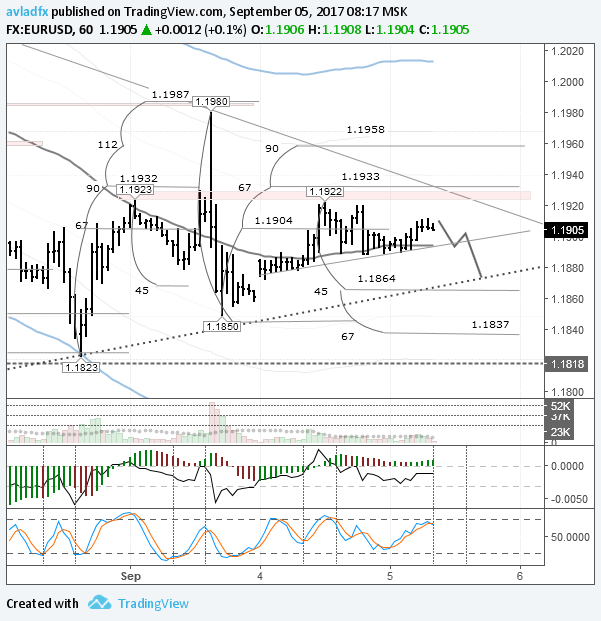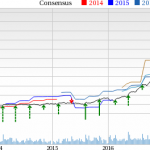Previous:
On Monday the 4th of September, trading on the euro/dollar pair closed up. The rate went up as the dollar fell in the aftermath of North Korea’s nuclear bomb test. Since the US and Canada both celebrated Labor Day yesterday, banks and exchanges in these countries were all closed and so activity was low on the currency market in the second half of the day. During the US session, the euro/dollar rate stabilised around the 1.1900 mark.
Day’s news (GMT+3):

EUR/USD rate on the hourly. Source: TradingView
In Monday’s forecast, I predicted the price to trade within a corridor of 1.1860 to 1.1920. The euro actually hit 1.1922 before falling to 1.1889. Because of the national holiday in the US and Canada, sellers were unable to reach the lower target.
At the time of writing this review, the euro is trading at 1.1905. Trader attention this week will be focused on the meetings to be held at the ECB and Bank of Canada. Canada’s central bank may raise interest rates. In Europe, traders are hoping to get a clearer picture of the ECB’s QE program.
The North Korea situation is still unclear. New sanctions have yet to be fully prepared, while North Korea is getting ready for further tests. The yen, the franc, and gold, as safe haven assets, continue to enjoy high demand from investors.
In my forecast today, I’m predicting a slide for the euro down to the trend line at 1.1875. I think that pressure on the euro on the euro/pound cross will remain until the 7th of September. Since I’m not sure how American investors will react to North Korea’s nuclear test, my forecast only goes as far as the start of the US session.













Leave A Comment